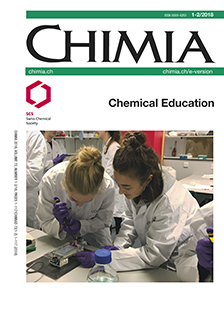Chemistry and Art
DOI:
https://doi.org/10.2533/chimia.2018.27Keywords:
Art fakes, Chemistry and art, Investigation of paintings, Science and art, Teaching chemistryAbstract
This review summarizes possibilities of including scientific methods for investigation of art objects into the secondary school chemistry curriculum. We discuss methods such as X-ray radiography, infrared reflectography, neutron activation autoradiography, X-ray fluorescence, and Raman spectroscopy and provide recent examples of their use. The results obtained, especially when combined with modern digital image processing algorithms, are indeed impressive. The second part of the paper is devoted to suggestions for actual use in teaching. The activities in the classroom can be centered around scientific investigation of a single painting, properties and use of a single pigment, or utilizing parallels in the history of Chemistry and history of Art. Finally, scientific methods for detecting art fraud including actual historical examples are especially motivating for the students and various teaching activities can be designed around this aspect.Downloads
Published
2018-02-01
How to Cite
[1]
J. Lipscher, Chimia 2018, 72, 27, DOI: 10.2533/chimia.2018.27.
Issue
Section
Scientific Articles
License
Copyright (c) 2018 Swiss Chemical Society

This work is licensed under a Creative Commons Attribution-NonCommercial 4.0 International License.







